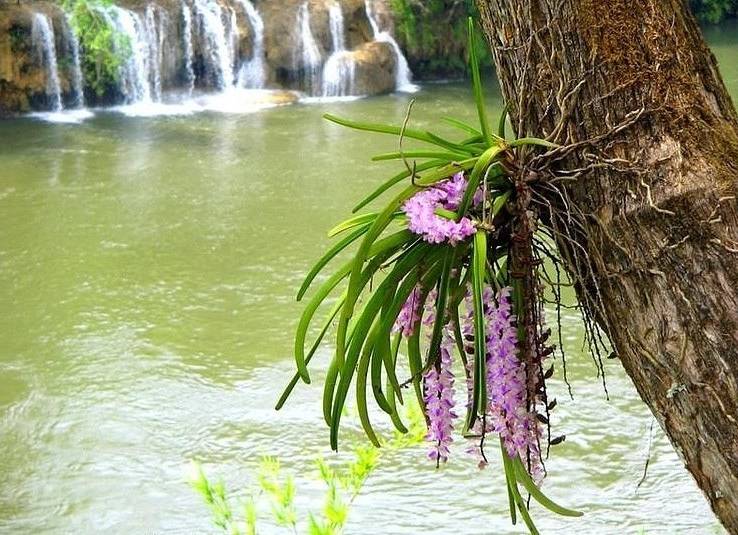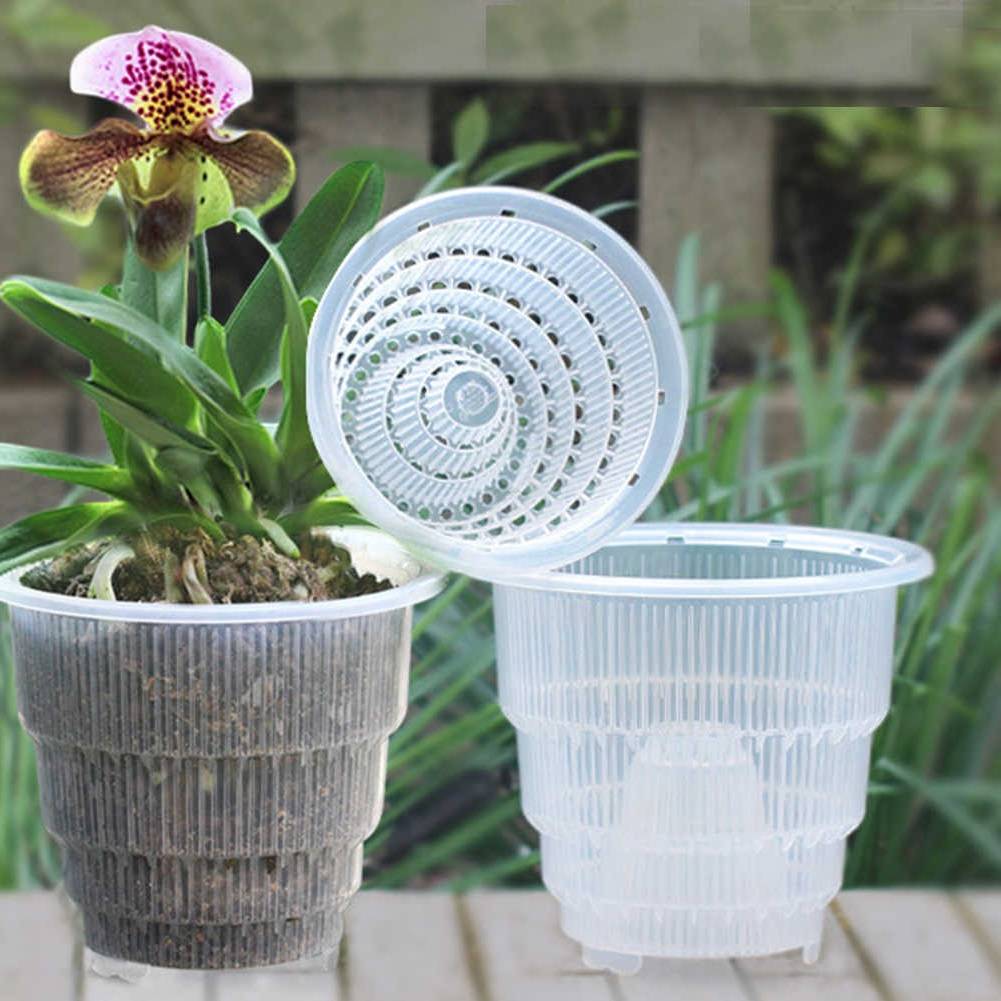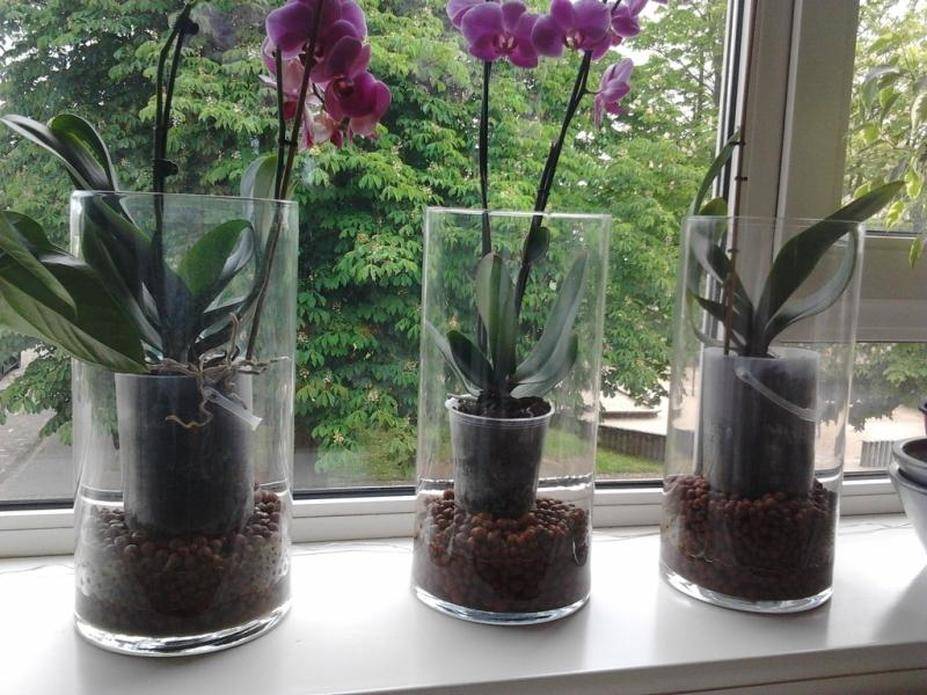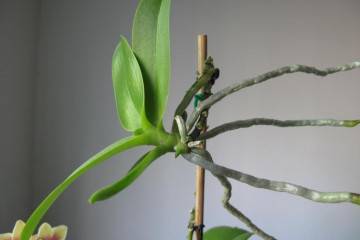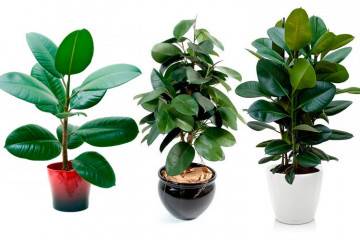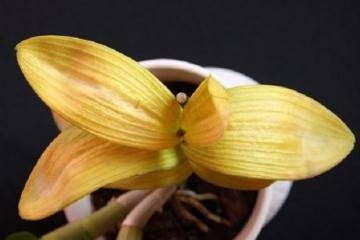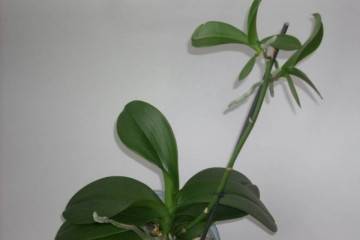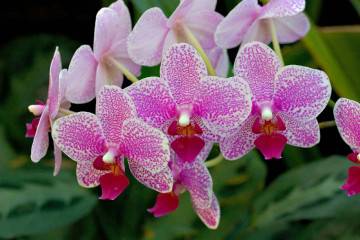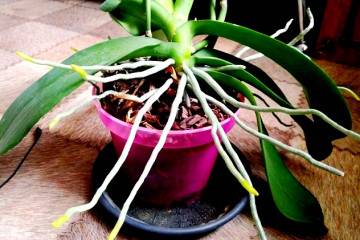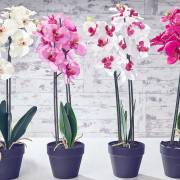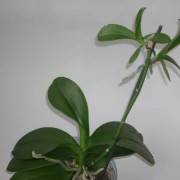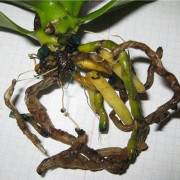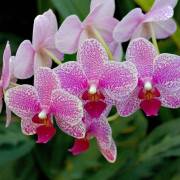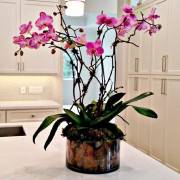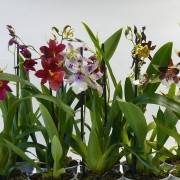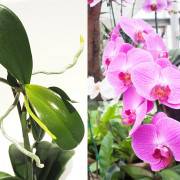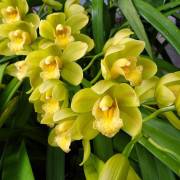Pot for Orchids - which one is better to choose
Content:
Deciding to decorate their interior with a whimsical beauty-orchid, people are faced with the need to learn as much as possible about the plant and its conditions. When buying a green pet, the first step is to determine what kind of pot you need for an orchid.
In which pot the plant will be better
Orchids growing in nature are epiphytes, in other words, they are not located on the soil, but on the trunks of tropical trees. That is, orchids use other plants as a support, but not as a source of nutrients. At the same time, orchid roots hang almost freely in the air, participate in photosynthesis, and receive little moisture - only what flows down through the upper tier of tropical vegetation.
These are the conditions that should be created in the container for these plants. This task is not trivial and causes many difficulties for novice florists.
Terrestrial orchid species are less whimsical to care for. They have rhizomes and nodules and, unlike epiphytes, are more adapted to indoor conditions. It is enough for them to pick up a special, more nutritious soil.
The orchid pot should be small enough. The correct dimensions ensure that the roots are firmly in the container. When transplanting - and it must be done at least once a year - you do not need to take too large a container. The new pot should be not much more spacious than the previous one, by two or three centimeters.
An important requirement for most types of orchids is the transparency of the pot. It allows some of the sun's rays to fall on the roots of the flower: in orchids they have an amazing ability for these organs - they participate in photosynthesis.
It is necessary to provide a uniform temperature to all parts of the plant - both roots and leaves. The material of the orchid pot is responsible for this: how to choose one so as not to damage the plant? The material from which the vessel is made should not be heated and keep warm for a long time. The inner walls of the container should be smooth so that the orchid does not grow roots to them.
Another important quality of the pot is stability. Which pot to plant an orchid in depends on the size of the plant. These flowers grow upward, so narrow tall pots are a poor choice and tend to tip over. If the container is light, it must be additionally weighted, for example with a massive pots.
In nature, the roots of most orchid species are not located in the ground, but in the same air-water environment as the rest of the plant organs (leaves and flowers). Therefore, in indoor cultivation, the roots should not end up in warm pots - otherwise the plant will become sick.
The temperature in the container and outside must be the same. To do this, they take plastic pots (plastic does not store heat), cut holes in them from the bottom and slots on the side so that the air has unhindered access to the orchid roots.
Transparent plastic pots
Plastic containers are most suitable for novice orchid lovers. Thanks to a good view, it is easy to control the condition of the roots, the amount of water for irrigation. The transparency does not interfere with the course of photosynthesis in the roots of the plant. If the roots remain green, water early, the white roots signal the need for moisture.
Finally, the smooth walls of such containers do not allow them to become a substrate for ingrowing root hairs.
There is only one drawback of plastic pots - their lightness. A growing orchid makes such a structure easy to tilt, so before planting it, you need to strengthen the position of the plastic pot. For example, fix it with technical devices, bury it in an additional wide container with soil or stones, or equip it with a heavy planter.
Clay and ceramic pots
Unlike plastic, ceramic and clay containers for orchids look very prestigious and highlight the beauty of the flower. Their weight will allow you to get rid of the risk of overturning the pot with the plant.
However, root hairs of orchids easily grow into the pores, so you need to take exclusively glazed pots, they are smooth. Over time, from numerous waterings, the pores are filled with salts. In such a container, the orchid begins to hurt.
Clay and ceramic pots lack the transparency that most orchids need.
Glass containers
Breeding orchids in glass vases is aerobatics. And it is available only to the pros of orchid farming.
Through the glass, the roots of the plant and the unusual soil on which the orchids are grown are clearly visible. In addition, the sun's rays through a completely transparent material freely enter the photosynthesizing roots. Glass containers are heavy and hold a tall plant well.
However, all these advantages are crossed out by the impossibility of "organizing" additional holes in the glass vessel. In practice, this means the need for careful dosing of irrigation - you need to take into account each drop and avoid overflow.
Hanging pots
A cache-pot is a second, outer pot, a "shell" in which a container with an orchid is placed. Orchid planters - transparent or colored plastic, glass or wicker, clay - primarily serve as a decorative element.
The "cover" should be about 2–3 cm larger than the pot, so that the air between their walls can circulate freely. At the bottom of the planter there is a depression for draining the water, then it evaporates and re-moistens the soil. The planter itself should not have holes - this allows you to hang it.
Pot crown
A popular and very decorative model of a planter is a crown pot for orchids, with a pallet. It is a "fence" or palisade made of plastic or wooden slats, fixed on a round base.
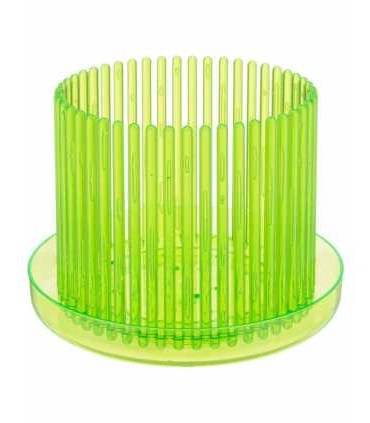
The flowerpot-crown of a soft green color will provide the plant with comfort and will not overshadow its beauty
In such a pot, you need to correctly position the soil in order to prevent it from spilling out. For this, large pieces of bark and moss are placed closer to the walls, and smaller fragments of soil are placed in the middle of the container.
Hanging planter
Hanging is easy to make any pots. To do this, they are suspended from the ceiling or walls on special mounts. Usually small and medium-sized plants are bred in hanging pots.This saves space in the apartment, but you should immediately think about the moment of watering - after all, the pots need not only be hung, but also removed in order to moisten the soil.
With automatic watering
Orchids love spraying, but it is better to do it twice a day. Not everyone has this opportunity, but you can buy pots with automatic watering. With such equipment, you can not approach the orchid for two weeks, for example, if you need to go on a business trip or on vacation.
Autowatering can be of various modifications, but the principle is always the same. These are two pots (double pot), connected as communicating vessels, in one - the plant "lives", in the other there is a supply of water. The system is equipped with an indicator showing that self-watering is required. When the indicator is triggered, capillary saturation of the soil with water begins. It can come not only from above, but also from the sides.
Homemade Orchid Pot
Purchased flower pots aren't your only option to grow your orchid. You can go along the budgetary path - make a pot for a tropical guest from a plastic bottle or bucket with your own hands.
To do this, they stop at a transparent plastic container (it is better than dark green, blue bottles). Holes are made in it for drainage - at the top, from the sides. A drainage layer is poured, for example expanded clay, and special soil for orchids - pieces of pine bark, sphagnum.
Homemade pots in the form of a basket decorate the interior. A cache-pot can be made from wooden slats, simply by folding them in a well, as children fold a match well, and tying the corners with a harsh thread or thin wire. This design will perfectly decorate a balcony or street wall.
When choosing a pot for an orchid, you need to remember that there are no better pots - you need to proceed from the existing experience in breeding orchids and the characteristics of a particular plant. Those who started the first orchid would be better off dealing with a plastic pot, and luminaries are able to grow a healthy flower in a glass flowerpot.

